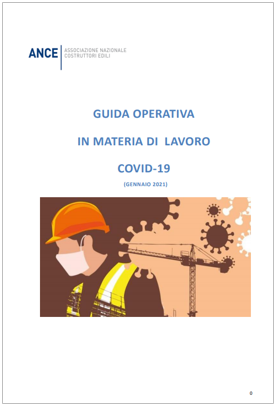Informazione tecnica HSE / 25 ° anno
/ Documenti disponibili:
45.689
/ Documenti scaricati: 34.730.606
/ Documenti scaricati: 34.730.606
ID 19282 | 22.03.2023
This study aims to identify the types, purposes and uses of smart digital occupational safety and health (OSH) monitoring systems.
It also identifies and assesses related opportunities, risks and challenges, 1 and provides recommendations for policy, research and practice for the purpose of improving workers’ OSH.
Digital systems and technologies have advanced more rapidly than any innovation in our history, and they are changing and impacting people’s lives globally. Of particular note is the emergence of technologies such as:
- artificial intelligence (AI) and machine learning (ML);
- wearables,
- smart personal protective equipment (PPE) and exoskeletons;
- virtual and augmented reality (VR and AR);
- widespread connectivity, the Internet of things (IoT) and big data applications,
among others.
These smart digital systems and technologies are redefining safety and health at the workplace. This is particularly true for high-risk sectors, such as industrial facilities (e.g. warehousing, manufacturing), construction and engineering, mining and quarrying, agriculture, shipping and others. In these, but also in lesser-risk sectors, new OSH monitoring systems can track a wide cast of workplace risks and help workers and OSH professionals to manage them. Broadly, these systems can help prevent risks, or react to them.
For example, in terms of preventing risks, new technologies in standalone equipment (e.g. exoskeletons), in PPE, in industrial facilities (e.g. workers) and so on are able to nudge and even provide personalised feedback to workers on how to manage their workplace’s risks.
In addition, they are able to provide aggregate data to OSH managers, which can help them identify where risks occur and act on them. In terms of reacting to risks, new OSH monitoring systems can help track, for example, a lone worker who is at risk, through man-down functions, and possibly reduce the time of rescue operations. Research conducted so far revealed limitations in definitions and research on new OSH monitoring systems.
First, there is lack of a clear and agreed upon definition among academics, legislators and practitioners of new OSH monitoring systems. Second, there seems to be a disparity between the number of studies and research conducted on technologies (their components, their purposes of use, etc.) and that of their practical application.
There also seems to be a lack of consistency and coherence in the published studies (despite their abundance), especially in depicting the purpose of use across sectors and types of job tasks, as linked to occupational hazards and risks.
Furthermore, there are few studies that analyse their practical application and provide robust evidence of their effectiveness on OSH, over the short and longer terms. Besides, quantitative and qualitative data seldom distinguish between OSH monitoring, automation and monitoring performance in the context of workplace and worker surveillance. To meet the objectives of this study and overcome some of the limitations of research to date, this research focuses on secondary and primary data collection and analysis. Secondary data include an extensive review of the literature: 182 documents, reports and articles.
Quantitative secondary data are mainly based on the Third European Survey of Enterprises on New and Emerging Risks 2019 (ESENER-3), which includes responses from a total of 45,000 workplaces with more than five employees in 33 European countries and where the respondent is ‘the person who knows best about safety and health in the workplace.’
Primary data consist of a total of 29 online interviews carried out between November 2021 and February 2022 with key stakeholders.5 In line with the analytical framework of the study, this report is structured across seven sections: the introduction, five main sections, and a concluding section.
Section 2 focuses on the drivers and barriers to adoption, namely ‘Technological push’, ‘Legislation, standardisation and research’, and ‘Organisational factors’, which include demand and supply-side factors that may increase, limit or baruptake.
The section also gives indications on the uptake of digital technologies among EU establishments, although data does not clarify the specific purpose of use (i.e. OSH monitoring, or other purposes like monitoring worker performance, work automation).
...
add more in attachment

ANCE - Gennaio 2021
In allegato:
- Guida operativa in materia COVID-19 (gennaio 2021)
- COVID 19 Indicazioni operative corretta gestione del rapporto di lavoro nelle di...

Corsi di addestramento base ed avanzato per le operazioni del carico delle navi cisterna adibite al trasporto di gas liquefatti, di prodotti chimici o prodott...

Infortunio con la soda caustica. Responsabilità del datore di lavoro per la totale assenza di adeguati presidi e procedure di sicurezza
Penale Sent....
Testata editoriale iscritta al n. 22/2024 del registro periodici della cancelleria del Tribunale di Perugia in data 19.11.2024